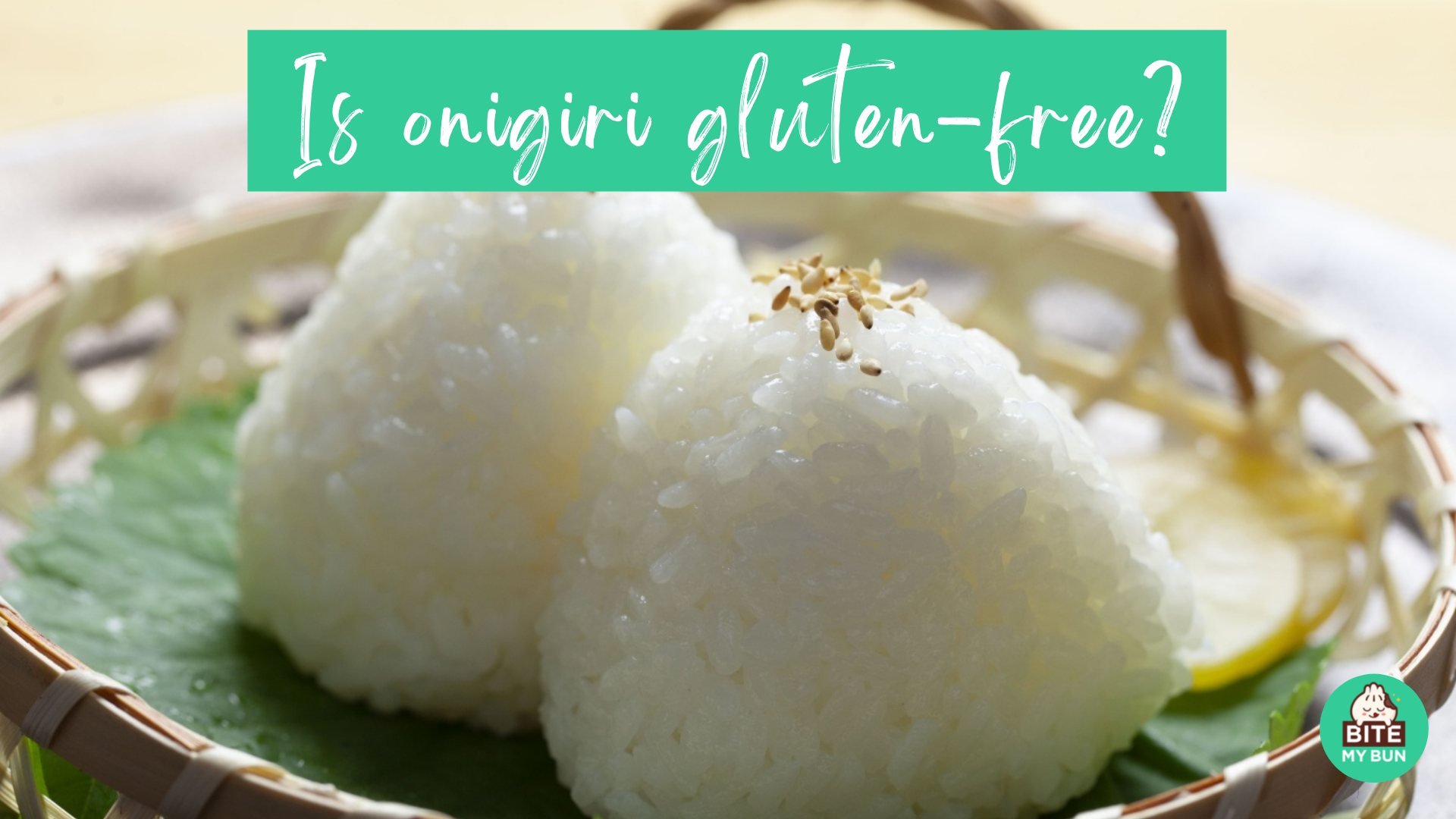Is onigiri gluten free? Yes, but watch out for the fillings and sauce
Onigiri is a rice ball dish from Japan.
The rice ball may be wrapped in seaweed and may have other ingredients mixed into the rice itself or placed in the center of the rice ball.
If the onigiri is not wrapped in seaweed, it may even be grilled to give it a crispy coating. Onigiri may be eaten as a side dish or a snack on the go.
But you might be wondering if onigiri is gluten-free?

For the most part, onigiri is gluten-free.
The base ingredients of onigiri, rice and seaweed, are both naturally gluten-free and are a great choice if you are avoiding gluten.
This means onigiri can be enjoyed as a meal or side dish to accompany a gluten-free meal.
You can enjoy plain onigiri relatively risk-free, but you may want to experiment and try onigiri that has other ingredients included in the rice ball as a filling.
Also read: these are the difference between onigiri and onigirazu

Check out our new cookbook
Bitemybun's family recipes with complete meal planner and recipe guide.
Try it out for free with Kindle Unlimited:
Read for freeOnigiri fillings
Most of the ingredients that may be mixed into the rice, or placed in the center of the rice ball, are gluten-free.
Some examples of gluten-free additions to onigiri are:
- Pickled plums
- Tuna with mayo
- Tobiko, or fish roe
- Dried fish
- Pickled vegetables
- Egg salad
Will I find onigiri that is not gluten-free?
If you keep to onigiri containing the ingredients listed above, you should not encounter gluten.
However, sometimes an ingredient added to onigiri can be tempura flakes. Tempura batter, which is then fried and added to onigiri, is made from wheat flour and is therefore not gluten-free.
When choosing onigiri, stick to fillings that you know are gluten-free and you should not have an issue.
Another ingredient that may be an issue is soy sauce. Some onigiri may be made with soy sauce, so be sure to watch for that.
Soy sauce may not sound like it contains gluten, but it is made from roasted soybeans and wheat that has been allowed to ferment.
That hidden gluten could cause you a lot of pain, so make sure to avoid soy sauce when eating out. Here’s a great list of substitutes for soy sauce that you can use.
If you are not sure…
If you are not sure if the onigiri you plan to buy is gluten-free, it is best to ask!
Sometimes, you may not be able to tell if an ingredient in the food is gluten-free or not. While onigiri is usually a safe bet, if you are unsure, it is best to double-check.
Read next: Is Sushi Gluten Free? Sushi itself yes, but check on these things
Check out our new cookbook
Bitemybun's family recipes with complete meal planner and recipe guide.
Try it out for free with Kindle Unlimited:
Read for freeJoost Nusselder, the founder of Bite My Bun is a content marketer, dad and loves trying out new food with Japanese food at the heart of his passion, and together with his team he's been creating in-depth blog articles since 2016 to help loyal readers with recipes and cooking tips.
